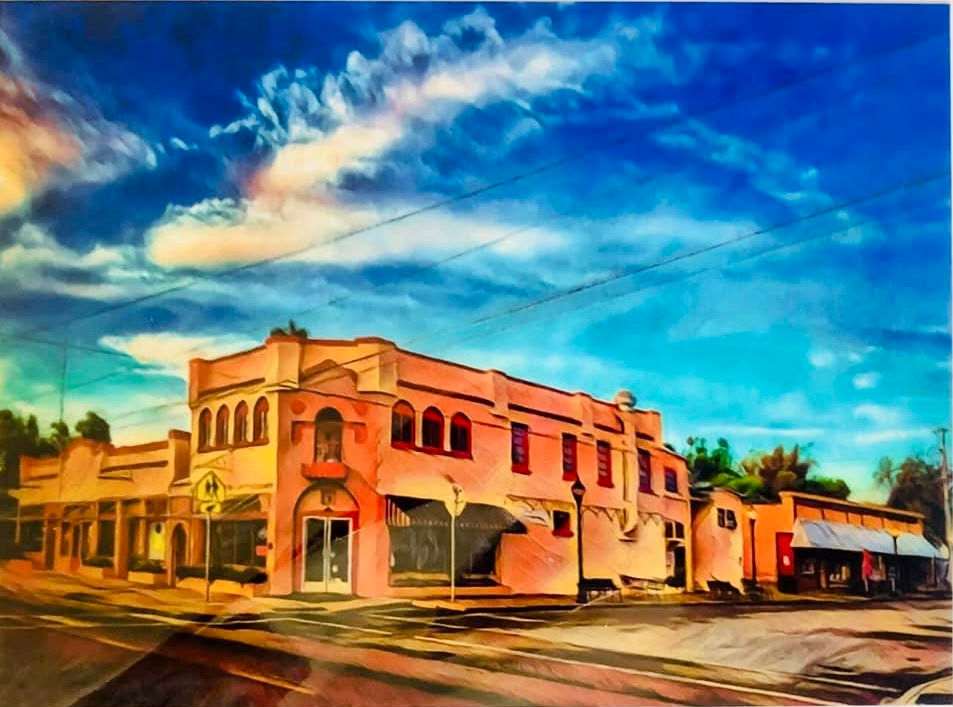LaBelle at a Crossroads: A Century-Old Town Battles a Highway Through Its Heart
- Danika Joy Fornear

- Oct 5
- 5 min read
Updated: Oct 13

As LaBelle celebrates its 100th year, the quiet river town that has long stood as a symbol of Old Florida is facing a defining moment.
The Florida Department of Transportation (FDOT) is advancing plans that could bring a four-lane highway—known locally as the “Dogleg”—straight through LaBelle’s historic downtown.
Supporters say the area needs a traffic solution. Opponents agree—but argue that FDOT is moving ahead without giving the community a fair, transparent look at all alternatives.
Residents worry the current plan will destroy what makes LaBelle special: its walkable streets, century-old oaks, small-town economy, and sense of belonging.
If you only have a minute: FDOT dropped safer bypass options and is now focused on a route that runs through the middle of town. Locals have until October 15 to comment on the plan and urge the City of LaBelle to keep Main Street in local hands.

For Those Who Want the Full Story:
A History of Overlooked Alternatives
The idea of a bypass around LaBelle isn’t new. FDOT has studied it, on and off, for nearly two decades.
Early studies included multiple east, west, and hybrid routes that could relieve truck congestion while protecting neighborhoods and the environment. But over time, most of those options were removed.
The most recent feasibility study—presented October 2, 2025—shows how sharply the list has narrowed. Routes like Alternative 13, which once offered an east-side bypass, were eliminated, leaving only alignments that pass through or near existing communities.
That decision has raised alarms among residents who question why so many reasonable routes were discarded.
The “Dogleg” Plan
Under FDOT’s preferred “Dogleg” plan, State Road 29 would be widened through downtown and extended with two new bridges across the Caloosahatchee River near Barron Park.
The highway would channel truck traffic onto Main Street, Oak Canopy Road, and Park Avenue—through residential neighborhoods and within blocks of schools, daycares, and churches.
Critics say the design would:
Demolish homes and historic structures
Increase noise, vibration, and pollution downtown
Endanger pedestrians and cyclists
Undermine small businesses that depend on foot traffic
Permanently alter the city’s riverfront and civic identity
As one community member told Big Mouth Media, “If this were Naples, they’d find a way to protect the town. But because it’s LaBelle—rural, working-class—they think it’s okay to bulldoze through it.”
That feeling is echoed across Hendry County. People see a pattern: wealthy towns get “context-sensitive” planning and downtown beautification, while smaller communities get asphalt and excuses.
Flawed Scoring, Limited Transparency
FDOT’s public slides show a scoring process that weighs “constructability” and cost heavily over other concerns like safety, environmental impact, and community displacement.
Critics say that weighting system effectively sidelines the routes that would cause the least harm.
Leonard Enriquez, president of Cambridge Project Development, told Big Mouth Media the methodology itself is the problem.
“The fatal flaw,” Enriquez said, “is that staff weighted the scoring so heavily toward ease of construction that the only routes left are the most destructive ones.”
Community members have also repeatedly asked FDOT to release the full GIS data and environmental mapping behind their evaluations, but so far, those requests have gone unanswered.
Expert Voices Call for Reconsideration
Dr. John Capece, Ph.D., Agricultural Engineer and long-time LaBelle resident, says the data simply don’t support the current direction.
“Alt 13 makes no sense unless you want to open up farmland east of town for development,” he explained. “Anyone can look at a regional map and see that it doesn’t solve LaBelle’s traffic problems—it just moves them.”
Capece points to western and hybrid bypass routes—variations of early “Path 1” and “Path 2” proposals—that could safely redirect truck traffic while connecting more efficiently with SR 80 and I-75. Those corridors would avoid densely populated areas, spare historic landmarks, and preserve the Caloosahatchee River’s fragile ecosystem.
The Real-World Impacts
If the Dogleg or similar downtown-aligned route moves forward, LaBelle could face irreversible consequences.
Community & Safety
Dozens of homes and local businesses could face demolition.
Truck traffic would increase near schools and playgrounds.
Main Street would become less safe for pedestrians and cyclists.
Economic
Small businesses that rely on foot traffic could close.
Tourism linked to LaBelle’s historic riverfront and annual festivals could decline.
Property values downtown could drop significantly.
Environmental
Barron Park and the Caloosahatchee’s riverbank habitat would be at risk.
Wetlands and wildlife corridors west and east of town could be disrupted.
Loss of mature trees and canopy cover would increase local heat and runoff.
Together, these changes threaten not just LaBelle’s charm—but its long-term livability.

Why Preserving LaBelle’s Heart Matters
LaBelle isn’t just another rural town—it’s one of Florida’s last living examples of small-town heritage: oak-shaded streets, family-run shops, Barron Park, the old swing bridge, and a community that still greets neighbors by name.
Preserving that identity isn’t standing in the way of progress—it’s what makes progress meaningful.
Communities that maintain their walkable cores and historic districts don’t just protect culture; they attract business investment and tourism. That’s how LaBelle can thrive for another century—not by carving a highway through its heart, but by valuing what makes it special.

A Smarter Path Forward
Local leaders and residents aren’t opposing progress. They’re calling for balance and transparency—a chance to find the route that truly serves the public good.
That means:
Re-evaluating all viable alternatives, including west and hybrid routes
Correcting the scoring process to value safety, heritage, and environment
Protecting LaBelle’s historic core and small-town economy
Ensuring decisions are made with community input, not over it
As Dr. Capece warned more than a decade ago, “The longer we wait to choose the right route, the fewer good options we’ll have. And here we are.”
City Leaders Already Set a Standard
In December 2020, LaBelle’s City Commission voted not to hand over Main Street to FDOT—a move that effectively blocked the Dogleg from advancing.
That decision preserved local control and protected the town’s downtown district. Now, residents are urging commissioners to stay firm and continue standing up for the community’s values.
Speak Up Before October 15
FDOT is still taking public comments—and every voice matters.
Email: Vitor.Suguri@dot.state.fl.us
Call: (863) 221-1707
Then scroll to the bottom and click “Virtual Public Meeting – SR 29 LaBelle Bypass Feasibility Study Slides 10.2.25.”
Tell them clearly: LaBelle deserves a fair, transparent study that considers all bypass routes—not a highway through our historic downtown.
Contact LaBelle’s City Leaders
City of LaBelle
481 W. Hickpochee Ave.
LaBelle, FL 33935
📞 (863) 675-2872 |
📠 (863) 675-0156
Mayor Julie C. Wilkins — juliewilkins@citylabelle.com
Commissioner Daniel Akin — danielakin@citylabelle.com
Commissioner Bobbie Spratt — bobbiespratt@citylabelle.com
Commissioner Hugo Vargas — hugovargas@citylabelle.com
Commissioner Jackie Ratica — jackratica@citylabelle.com
Quick Recap:
FDOT removed most low-impact routes from its study.
The “Dogleg” plan would widen SR 29 through downtown.
Western and hybrid routes remain the most balanced alternatives.
FDOT’s scoring system favors ease of construction over community impact.
The City of LaBelle can still protect Main Street by upholding its 2020 “No.”
Public comments close October 15—submit yours today.
A Town Worth Protecting
As LaBelle enters its second century, its people are proving that progress and preservation can coexist.
This isn’t about resisting change—it’s about demanding that change be thoughtful, equitable, and just.
A true bypass can relieve congestion, protect the river, and preserve downtown’s historic heart. But only if LaBelle’s residents continue to make their voices heard.
Because once a highway runs through a community’s soul, you can’t rebuild what’s been lost.









Comments